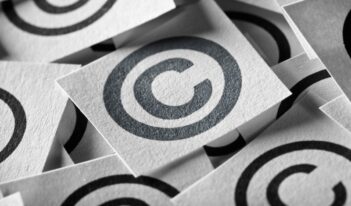
Scholar discusses how the Copyright Office could exercise broader rulemaking power.
The U.S. Copyright Office is not exactly a major source of regulations. It has issued only about eight rules per year since 1995, most of them relating to the procedures of registering a copyright with the Office. In addition, none of these rules have been deemed economically significant.
One scholar suggests that the Copyright Office should consider a more authoritative role in regulating. In a recent article, Joseph P. Liu of Boston College Law School discusses the Office’s historical role in rulemaking and examines how its past activity could foreshadow an increased role in the future.
In recent decades, the Copyright Office has focused its limited number of regulations on statutory licensing. These regulations govern the use of copyrighted material by television broadcasters, radio stations, and media entities in exchange for royalties.
In contrast, Liu observes that the Office has issued few regulations that “create substantive copyright law.” Many other agencies issue these regulations regularly, but the only current substantive regulation issued by the Copyright Office addresses when it is acceptable to circumvent anti-piracy measures on copyrighted works.
Liu speculates that the Office’s lack of emphasis on regulation has affected “its priorities, its worldview, and its capabilities.” Its current focus on statutory licensing may cause the office to be “particularly sensitized” to the needs of the industries that depend on these licenses, such as television and music, he speculates. The Office thus functions as “an administrator of industry agreements and settlements.”
The Copyright Office had a different focus for much of the 20th century, however. Congress created the Office in 1897 as a department of the Library of Congress. The first major legislation on copyright, the Copyright Act of 1909, granted the Office the authority “to make rules and regulations for the registration of claims to copyright.”
Early regulations issued by the Office reflected this emphasis on registration. Liu observes that the first version of the Code of Federal Regulations, published in 1938, contained regulations focusing “almost exclusively on the procedures for registering copyrights.” The Office issued a similar set of regulations when the Copyright Act of 1976 was enacted.
The focus on registration during this initial phase, Liu posits, led the Office to focus on related doctrines such as originality. Before 1976, Liu envisioned the primary constituents of the Office as “authors, publishers, and others who wish to license or use copyrights.” Consequently, the Office would have been most concerned with the validity of copyright applications and would function as a “recorder of claims and a facilitator of transactions.”
Since the passage of the 1976 Act, Liu has observed five categories of regulation from the Copyright Office: administrative or ministerial; registration, notice, and deposit; specific statutory duties; statutory licensing; and substantive regulations. Statutory licensing regulations form the largest of these five groups, while substantive regulations are the smallest group.
Administrative or ministerial regulations consist of regulations that “arise from the basic functions of an agency” and are not unique to the copyright system. These include rules about contacting the Office, privacy policies, and rules for making Freedom of Information Act requests.
Registration, notice, and deposit regulations include most of the pre-1976 regulations and focus on procedures such as the process and fees for registering a copyright with the Office.
Liu’s final category includes regulations involving the administration of specific statutory provisions. Liu notes that these regulations usually result “where Congress has expressly delegated to the Office a role in managing the particular provision.” For example, the Copyright Office specified the exact text for copyright warnings in libraries and archives.
Moving forward, Liu speculates on how the Copyright Office might look if Congress tasked it with implementing specific policy goals. Such a delegation of rulemaking authority would contrast with the Office’s past focus on transactions and licensing. Liu suggests, for example, that if Congress charged the Office to broaden access to copyrighted works, the Office could then promote this goal by creating exceptions to copyright liability through rulemaking.
Although creating more substantive rules is one potential path for the Copyright Office moving forward, Liu is cautious about this course of action. Congress must provide a “clearly articulated policy goal,” according to Liu. Furthermore, the Office must be careful not to fall victim to regulatory capture—where its regulations benefit private industry rather than the public interest. Liu is concerned with this possibility, since public interest in copyright is “diffuse” and less-organized than industry interests.
A more active rulemaking role for the Office may not be far off. Liu envisions, for example, the interplay between copyright and new technologies as a situation that could prompt a delegation of rulemaking authority.



